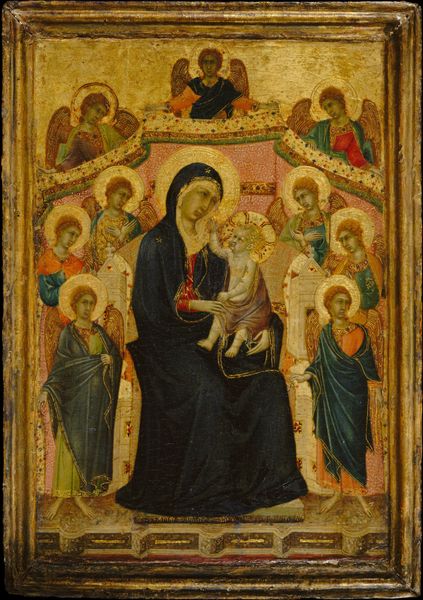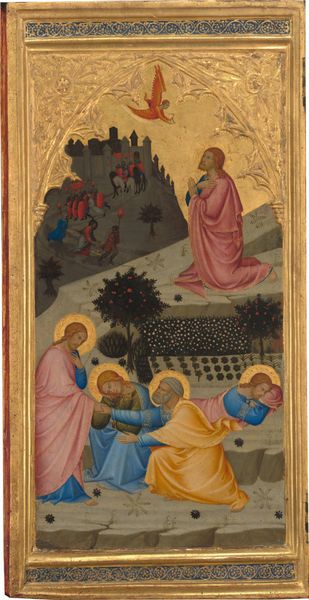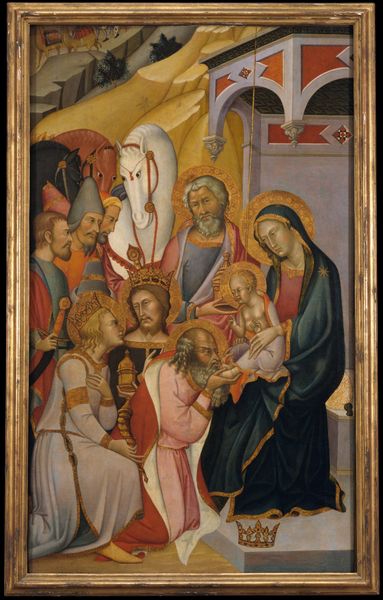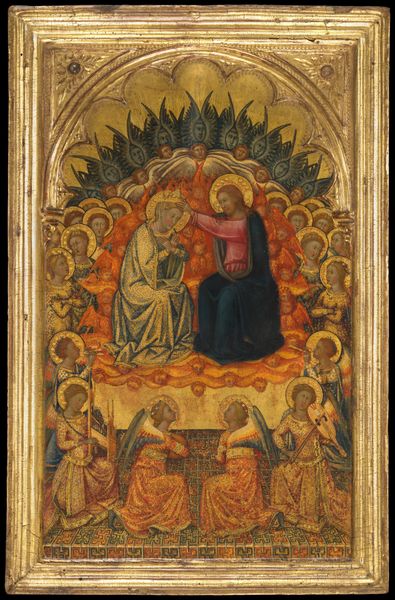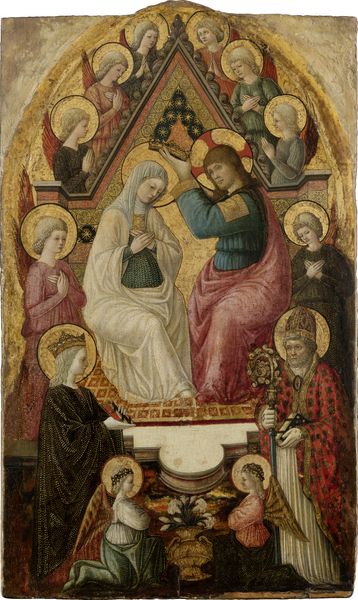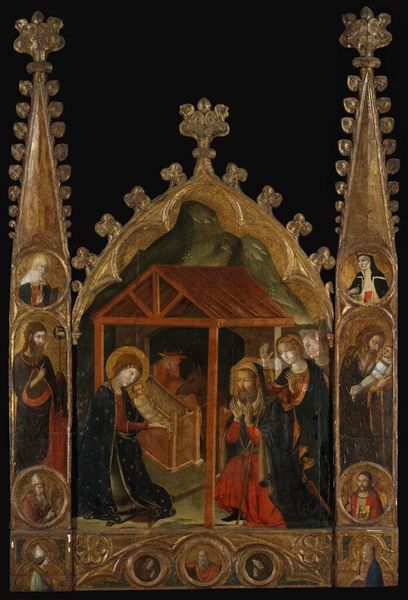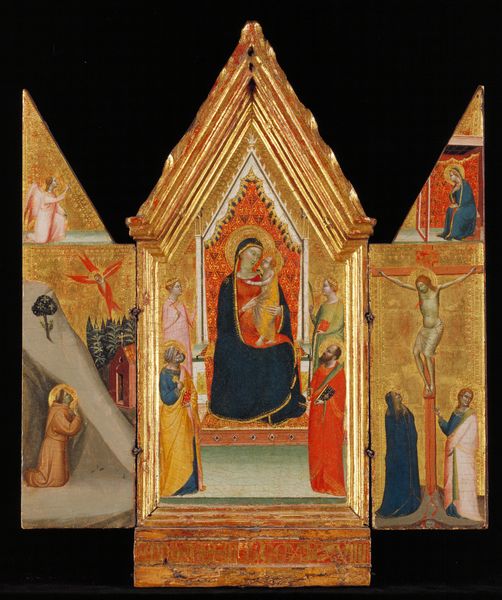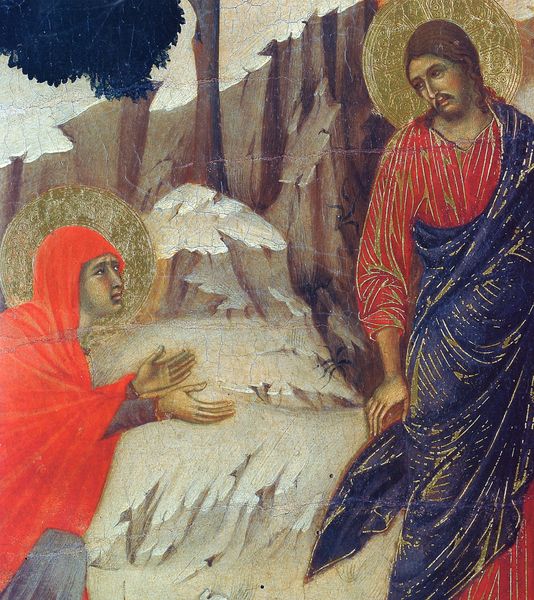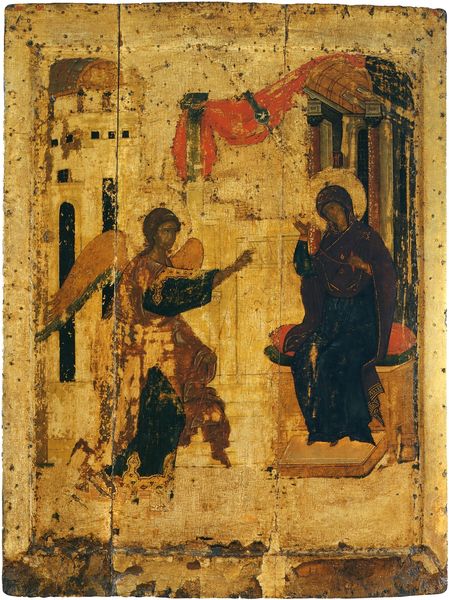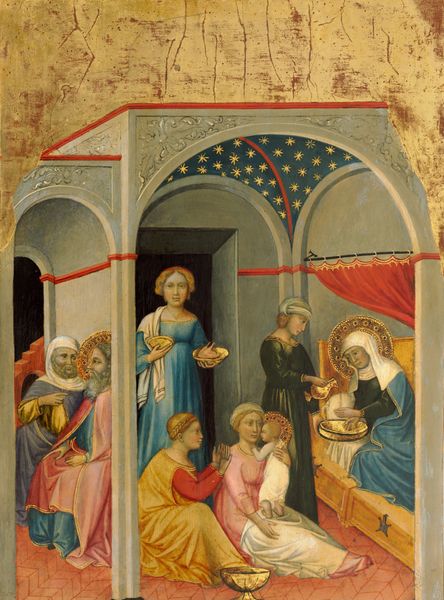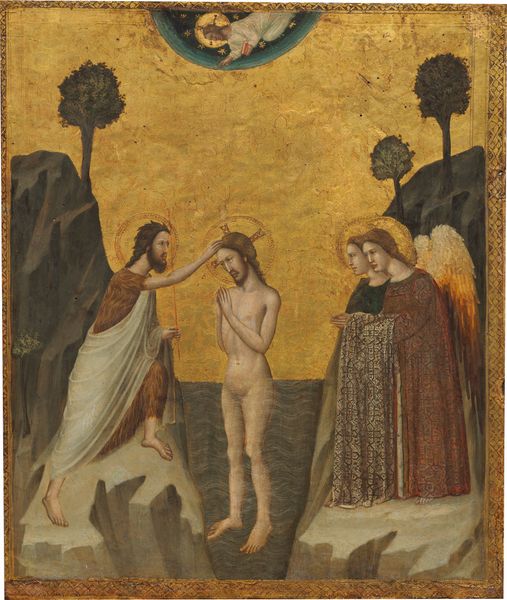
tempera, painting
#
medieval
#
narrative-art
#
tempera
#
painting
#
sculpture
#
figuration
#
oil painting
#
history-painting
#
early-renaissance
Dimensions: Overall, with engaged frame: 11 5/8 × 8 3/8 in. (29.5 × 21.3 cm) Painted surface: 8 1/2 × 6 7/8 in. (21.6 × 17.5 cm)
Copyright: Public Domain
Curator: Let’s discuss this tempera on wood panel. "The Nativity," attributed to Maestro Daddesco, dates from 1317 to 1343. It currently resides here at The Met. Editor: The gold ground is striking—absolutely radiant, though a bit unsettling. And there is a real spatial oddity at play between the foreground and background. It feels very compressed. Curator: Indeed. Consider that during this period, Italian art served largely a didactic purpose, particularly within a religious context. Works such as this would not only celebrate the divine, but also reinforce established social structures by visually narrating religious doctrine for public consumption. The hierarchical scale—the proportionally larger figures of Mary and the Christ Child—underscores their spiritual importance. Editor: Absolutely. But look at the rhythmic quality, too, how the curves of the angels' halos and wings mirror the arched roof of the stable and the contour of the landscape, binding the scene visually. Notice how Mary’s robe becomes an abstract, flowing shape, simplifying the complexity of her pose, and connecting her symbolically to both heaven and Earth. The composition invites close reading. Curator: It’s a deliberate approach, of course. Artists such as Daddesco operated within a patronage system; their aesthetic choices were significantly shaped by the requirements of their patrons and the prevailing theological narratives. The somewhat crude rendering is an attribute to its intended public who likely weren't art connoisseurs, which gives it folk appeal. Editor: You are not wrong, but despite the emphasis on function, the expressive gestures of the figures carry an emotional weight that goes beyond mere storytelling. The slight tilt of Mary's head as she cradles Jesus communicates so much tenderness and awe; such elements provide aesthetic richness and impact regardless of audience sophistication. Curator: This work underscores art’s social purpose in early Renaissance Italy, highlighting how artists played an active role in visually constructing religious ideologies for widespread consumption and compliance. Editor: And the deliberate construction of pictorial space creates depth, inviting viewers to immerse themselves visually. The use of symmetry adds gravity and reinforces symbolic harmony. It is both propaganda and visual poem.
Comments
No comments
Be the first to comment and join the conversation on the ultimate creative platform.
